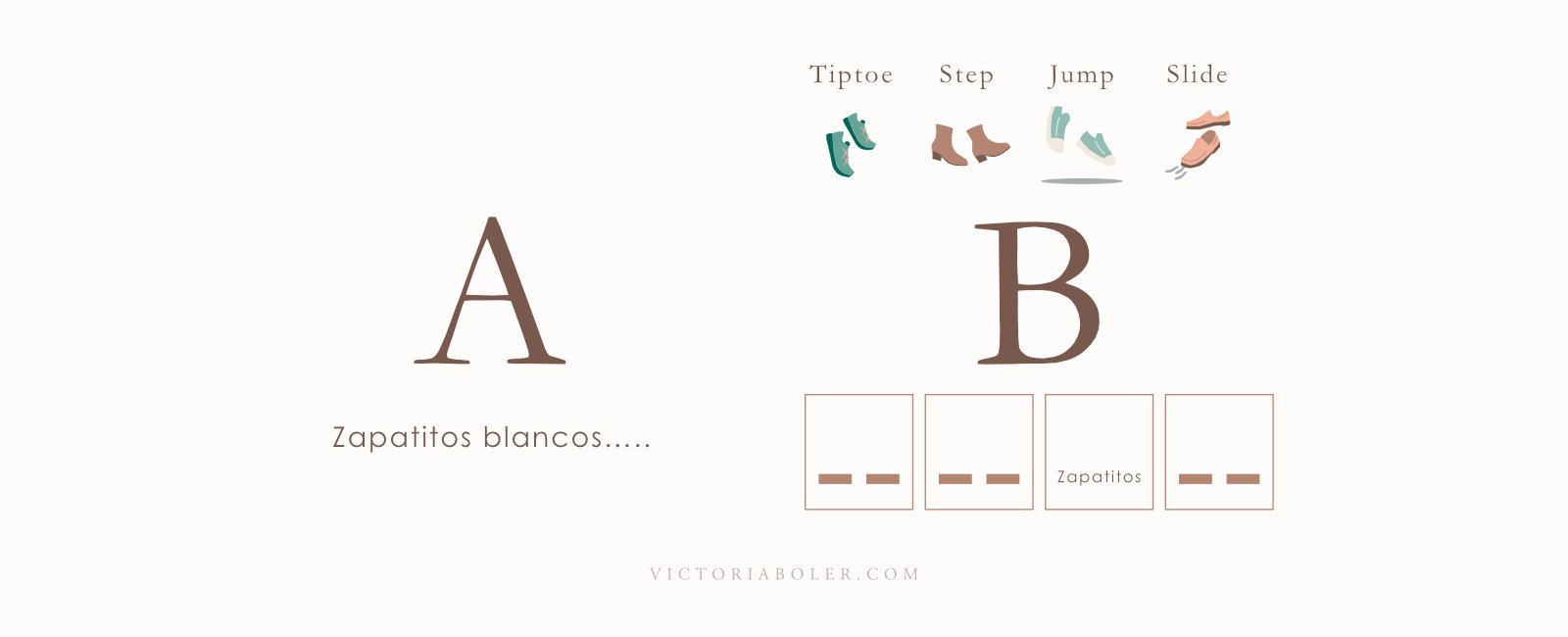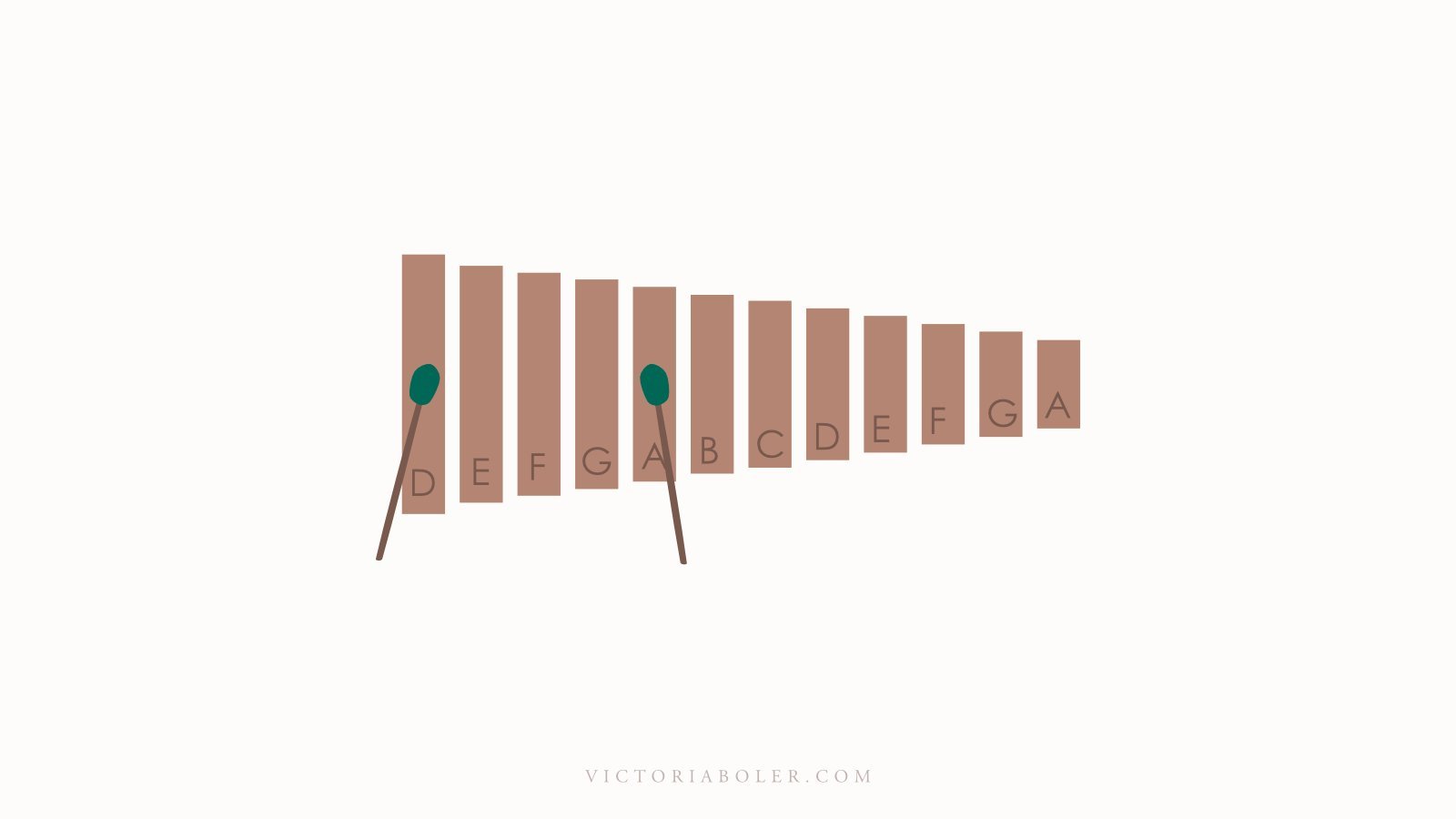Zapatitos Blancos: One Rhyme, Three Processes:
One of the joys of a repertoire and concepts-based curriculum is that we get to imagine songs and rhymes through many different lenses. This is what allows us to extend a song across several lessons in a single grade-level, and as we’ll talk about today, how we can extend a song or rhyme across multiple age groups.
Today we’re working with the Mexican children’s game, “Zapatitos Blancos.” This game is a hit from Kindergarten (and younger) all the way through 5th grade!
Zapatitos Blancos
Importantly, this game can stand alone as its own musical experience. Speaking the rhyme and playing the beat-passing game could certainly take up several lesson segments on its own!
To play the game, students sit in a circle with both feet extended.
One player in the middle pats a steady beat around the circle, tapping each person’s shoe as everyone speaks the rhyme. On the last beat of the rhyme, the person on whom the beat lands says how old they are. The beat continues around the circle for however old the student is. (For example, if the student is seven, the beat passes seven more shoes.)
When the beat lands on the final shoe, that person’s foot is eliminated from the game. They tuck it underneath them, out of the circle, so one foot is still in the game and one foot is out.
Continue through rounds as time allows.
Introducing the Rhyme & Game
Students can interact with the game to this rhyme at a few different levels in the first introduction. They might point around the circle with us as they listen. They might make a mental guess about what shoe the beat will land on. They might speak the numbers at the end.
When we introduce the game, the teacher sits in the middle of the group and points around the circle of shoes. Asking questions between each round is a great way to help students develop their own list of curious questions when they hear a new song or rhyme.
What do you notice about our rhyme?
Are there any words you recognize?
What do you think our rhyme is about? What makes you think that?
What else do you notice?
After several rounds, students may have pieced together some of the translation with known vocabulary words like “blancos,” “azul,” “anos,” and “tienes.”
In other situations, students may already know this rhyme and game from their own childhoods! If it’s already a known rhyme, this is a good time for students to share (if they would like to) how they learned it and who they play it with.
Let’s explore three different ways we might use this rhyme in an active music room: steady beat, form & movement, and improvisation.
Steady Beat
Steady beat is a natural curricular focus for this rhyme, given that the game itself is dependent upon a steady beat! After students know the game itself we can add a few layers of steady beat experiences in the preparation stage. These activities can be appropriate for kindergarten or first grade musicians, or whatever age group is working on steady beat.
Passing games take practice! Especially with young musicians, these are skills we can help develop through intentional scaffolding. Read about scaffolding passing games here.
“Mix & Match” Beat Development Activities
Unlike the activities we’ll discuss for older grades, these experiences serve more as a “mix and match menu” of steady beat development experiences. These interactions can last multiple weeks!
Though physical, aural, and visual preparation are often inextricably linked, we can highlight these skills in focused invitations.
Physical Experiences:
We might use any of the following physical experiences on their own, or we might choose a few to layer on each other as students are ready.
Speak the rhyme and play the game. When students are out…..
The eliminated student and the teacher play a steady music on a tubano in the next round of the game
The eliminated students (without the teacher) play steady music on a tubano
The eliminated student points steady music on a shoe or shoe icon
The eliminated students tracks four shoes or four shoe icons
Aural Experiences:
We can pair or alternate some of the physical experiences with aural experiences as well. Here are some options:
Students inner hear the rhyme and point around the circle. Do all students end up on the same shoe at the end?
Ask: As we point around the circle, does our pointing speed up, slow down, or stay the same the whole entire time? Speak the rhyme and play the game, then students turn to a shoulder partner to discuss.
Ask: How many steady points do we do in our whole rhyme? Students speak and point around the circle while counting in their heads.
The game, the physical activities, and the aural activities complement each other as students develop beat awareness and beat-keeping skills over time!
Form & Movement
Depending on your students, these activities can be appropriate for 2nd grade musicians.
The movements in this particular form and movement sequence correspond to one sound on a beat, two equal sounds on a beat, one sound on a beat followed by a beat of silence, and one sound elongated over two beats.
These activities do not have to involve standardized Western notation, though they could! This will depend on where students are in their process of linking aural awareness to visual representation of sounds.
Experience 1: Movement exploration
In the first experience we’ll introduce students to the B section of the rhyme, and explore shoe movements that we’ll build on later. Everything is predicated on an initial experience of speaking the rhyme and playing the game.
Zapatitos movements:
How could our shoes move?
The teacher models turning fingers into shoes and speaks:
Step step step step zapatitos step step. Motion for students to echo
Movement brainstorm:
Ooooo we can tiptoe. But I’m thinking of another way shoes can move… Oh I know! We can …..
(speak) Sliiide, sliiiide, zapatitos sliiiide. Motion for students to echo
At this point we might transition to staying seated but putting our feet out in front of us so students can move with larger muscle groups.
That was fun. I’m imagining something else… let’s stay seated and use our real shoes tooooooo….
(speak and move feet) Step step, step step, zapatitos, step step. Motion for students to echo.
After a few rounds, students suggest their own motions and the class tries them out
Experience 2
In the next class, or whenever students are ready to move on, we’ll start by reviewing our previous experience, and then extend the previous experience by asking students to come up with their own movement words in the B section.
Review previous class:
Speak the rhyme and play the game
Review ways our zapatitos can move (step, tiptoe, slide, etc.).
Ask students for suggestions of words to use
Non-locomotor movement:
Choose one movement for our zapatitos from students’ suggestions. Speak the rhyme while staying in place and stepping a steady beat. As a B section, continue to stay in place but add shoe movements:
Example: Twist twist, twist twist, zapatitos, twist twist or Waddle waddle, waddle waddle, zapatitos, waddle waddle, etc.
Try out several different student suggestions of movements.
Eventually narrow options to tiptoe, step, jump, and slide
Experience 3
When students are ready to move on (in the same class, or in a following class) we can explore traveling zapatitos after reviewing the previous experiences as necessary.
Locomotor movement:
All students speak the rhyme while standing in their spots and stepping a steady beat. A few students model how to move around the room in open space while speaking the rhyme.
The class discusses whether or not the students stayed in open space the whole time, and if they made adjustments to where the other students were as they were moving.
Repeat as necessary with different students and student groupings.
All students speak the rhyme while moving around the room in open space. At the end of the rhyme, the teacher displays a B section. Students stand in place and perform the stationary movements.
Repeat with other movement options.
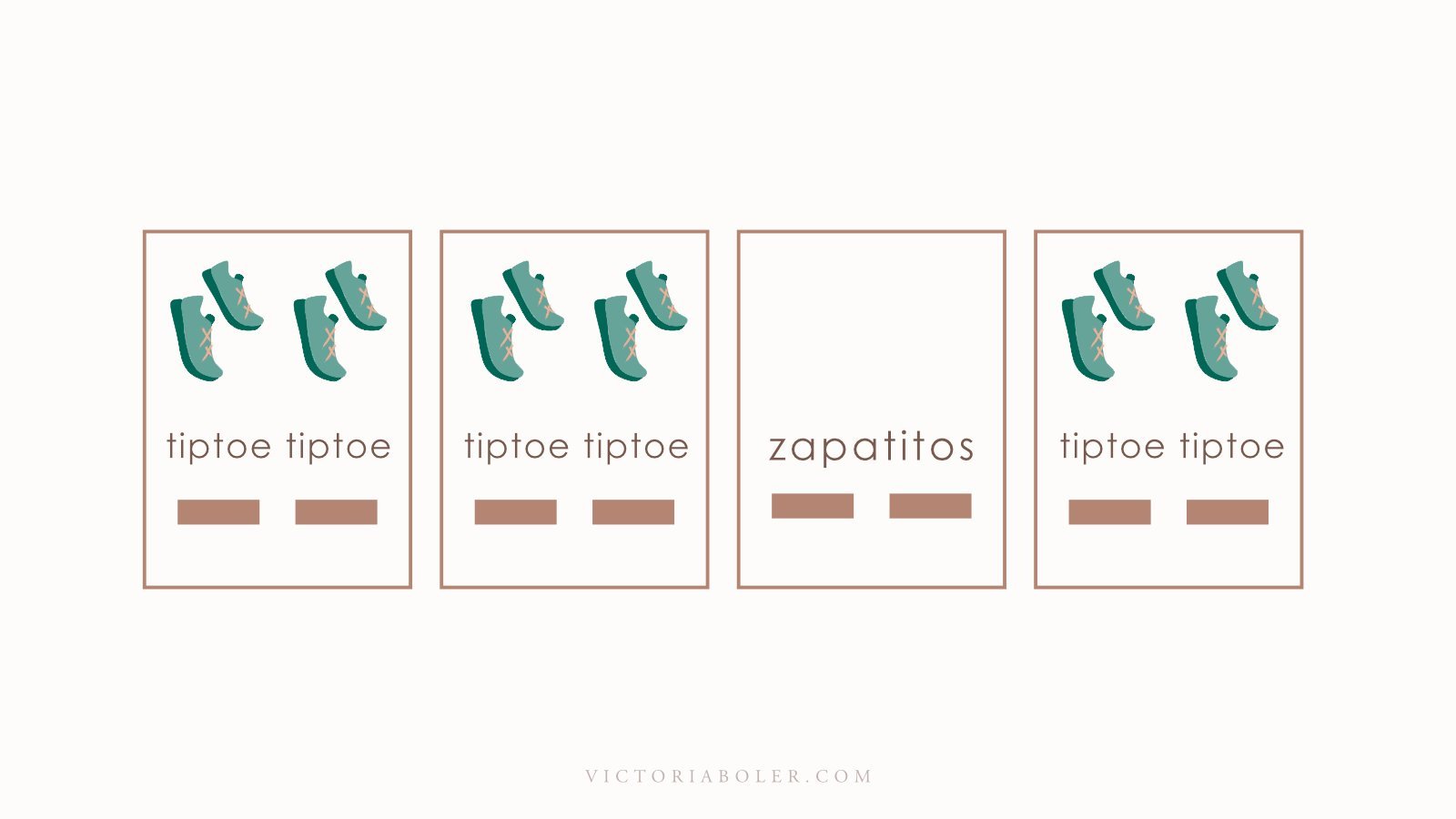
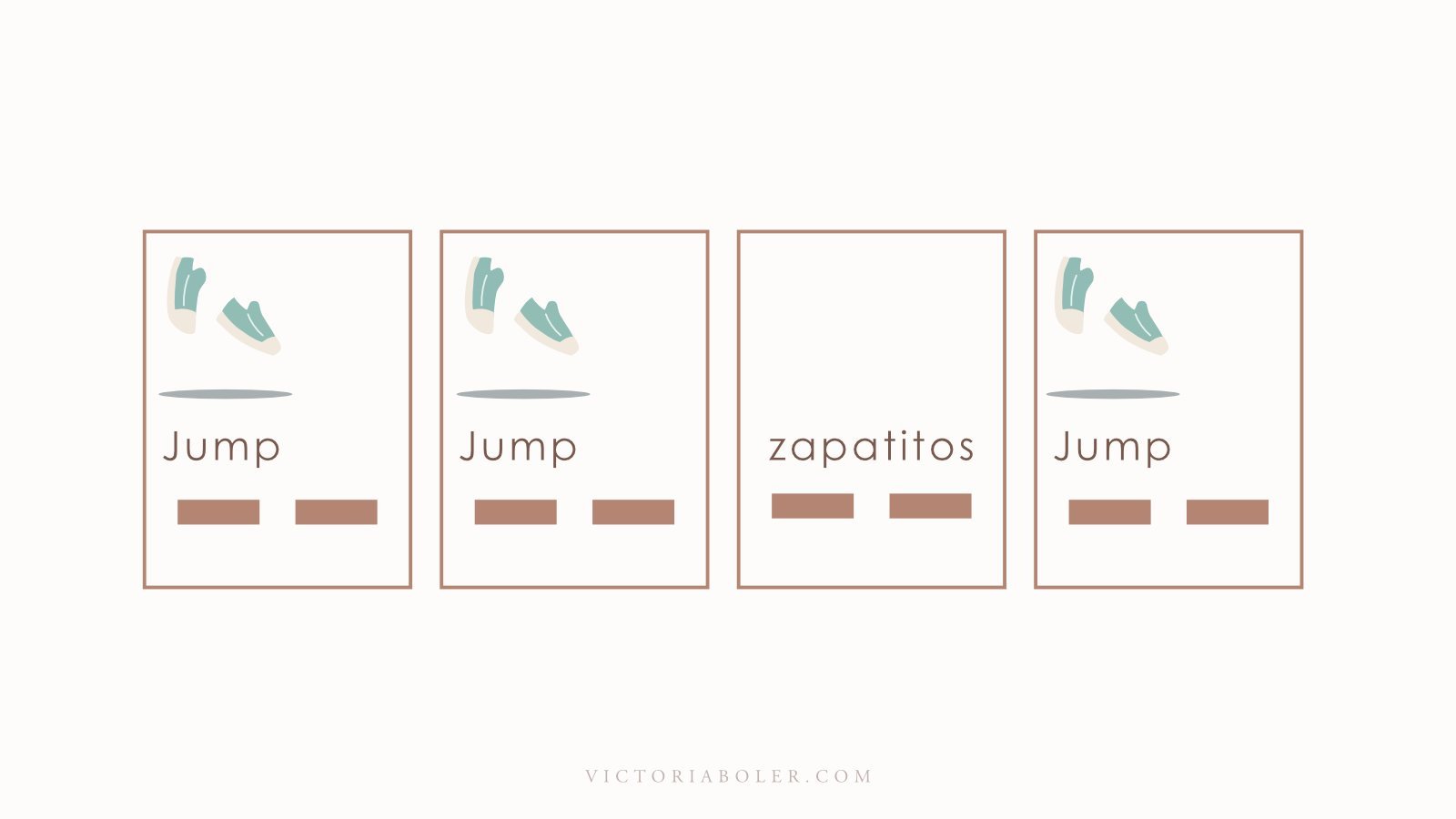
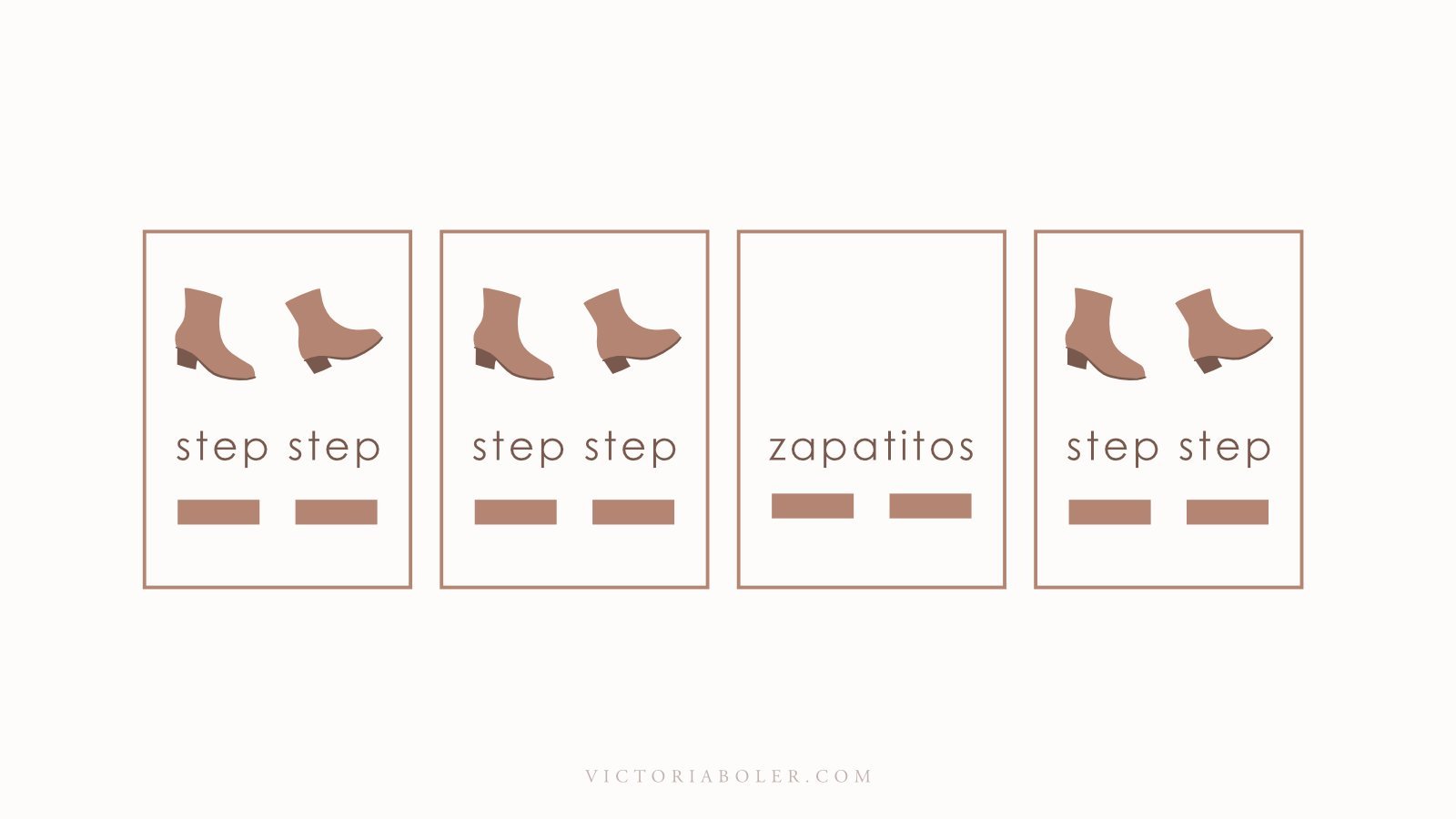
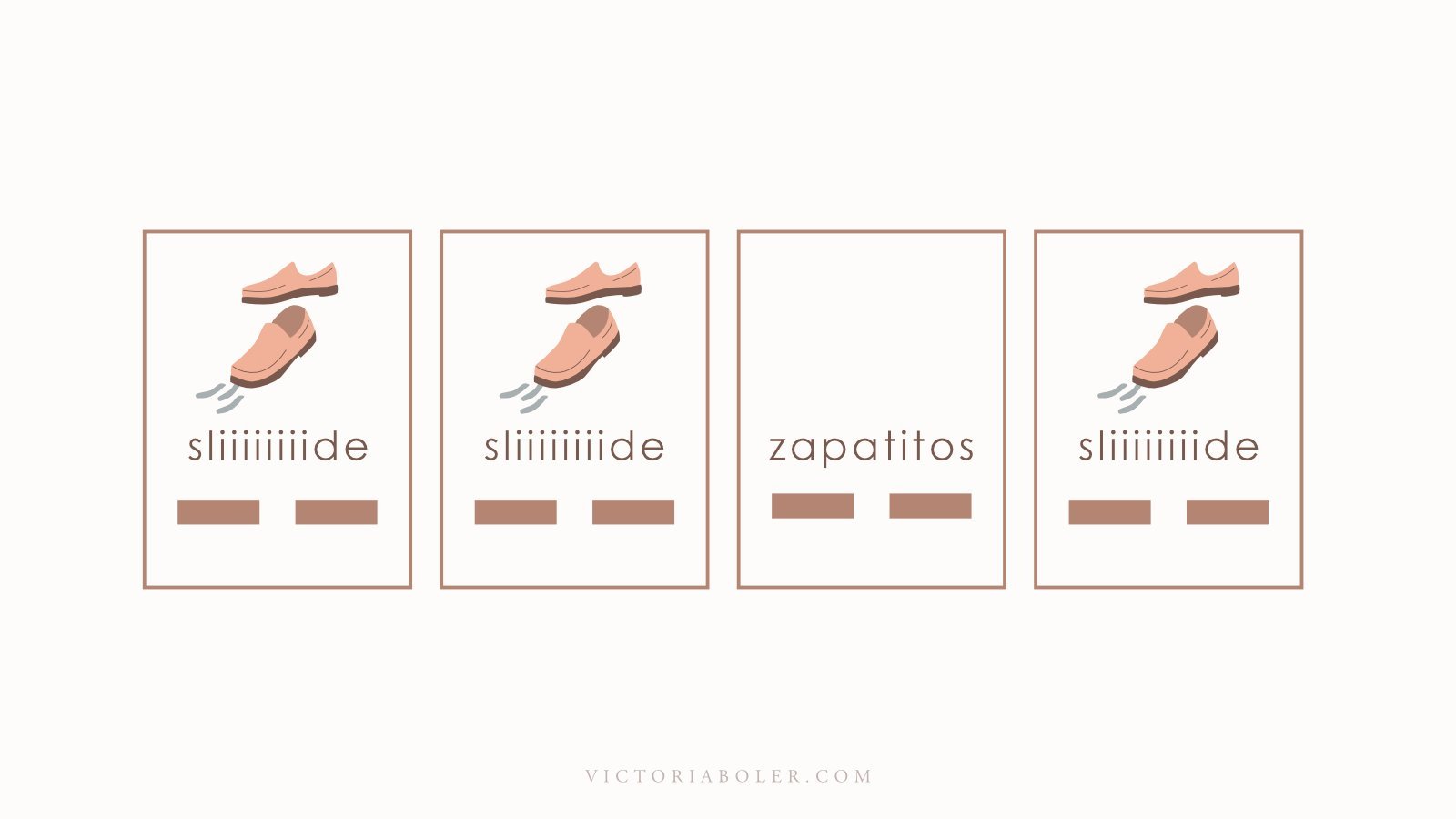
This movement activity is versatile - we can circle back when students are working with standardized Western notation, or leave the experience here. Importantly, activities like this involve students in creative musical thinking as we wonder how our shoes can move and then extend our ideas to locomotor movement and improvisation within specific parameters.
Rhythmic Improvisation: Body Percussion & Barred Instruments
This activity is from the 2022 - 2023 Planning Binder curriculum, in the Older Beginners concept plan. These experience happen after students have spoken the rhyme and played the game. This is also not students’ first experience with improvisation.
These interactions also begin with movement in open space, similar to the activities in the previous section.
Experience 1:
After students have spoken the rhyme, played the game, and clapped the rhythm of the words, we can extend the rhythm vs beat work by asking them to clap the rhythm of the words while stepping the steady beat.
Rhythm vs Beat:
Clap the rhythm of the words while stepping the steady beat in place
When students are successful doing this in place, they can make their movements travel around the room in open space.
Echo Improvisations:
Students step the beat and clap the words in open space, then stand still as the teacher claps eight beats. Students echo, then speak the rhyme and move in open space again.
Experience 2:
When students are ready, we’ll extend the traveling rhythm vs beat work to also incorporate some improvisation.
Review:
Speak the rhyme and play the game.
Review walking around the room in open space, stepping the steady beat and clapping the rhythm of the words
Echo Improvisations:
Students step the beat and clap the words in open space, then stand still as the teacher claps eight beats. Students echo, then speak the rhyme and move in open space again.
Improvise a Response:
When we see that students have the flow of the activity, we can add another layer of improvisation by asking students to improvise their response instead of echoing the teacher
Aurally Identify:
After several repetitions, students choose their favorite one of their improvisation responses. Lead students in playing their improvisation a few times so it’s memorized.
Students figure out their rhythm on rhythm syllables by thinking of how many sounds they are using on each beat.
When students are ready, they teach it to a nearby friend.
Experience 3:
The previous experiences can take several classes, or perhaps one class, depending on the students! If students are ready for an extension, we can transfer our improvisation experiences to barred instruments.
Review:
Review speaking the rhyme while walking in open space, then improvising their own response to the teacher’s rhythm
Take a Walk:
For this activity, instruments can be set up in any mode or tonality - this is a nice time to explore a mode students haven’t had much experience with. D Dorian is a great option for this - we can set up in D dorian by taking off the lowest C.
Seated in pairs behind a barred instrument, students take turns “walking” their mallets up and down the bars. If we imagine our mallets are little white and blue shoes, what does it sound like to gently step or tiptoe up and down?
Bordun:
Both partners speak the rhyme together. As they speak, one person claps the rhythm of the words and the other plays a steady beat chord bordun.
As a B section, the clapping partner improvises eight beats and the partner behind the instrument gently clicks their mallets to echo their partner’s improvisation.
Switch jobs so both partners have a chance to play the bordun, and to improvise a clapped rhythm
Barred Instrument Improvisation:
Repeat the activity. This time, the clapping partner improvises an eight-beat rhythm and the partner at the barred instrument improvises a new melody to their partner’s rhythm.
Switch jobs so both players have a chance to improvise a rhythm and a melody
With each new lesson segment, we build and extend on previous experiences. This is one of the keys to helping older beginners be successful with improvisation. Transferring improvisations to barred instruments adds another layer of student choice and peer interaction. The collaboration in this activity is part of what makes it so enjoyable for older beginners!
Rhythm, Movement, & IMPROVISATION
A game like “Zapatitos Blancos” can hold our attention for many weeks! There are endless possibilities for this rhyme across multiple grade-levels, and woven throughout multiple classes.
When we use repertoire as a jumping-off point for developing knowledge and skills, there are opportunities to explore ideas like steady beat, movement, and improvisation through a play-based lens.







